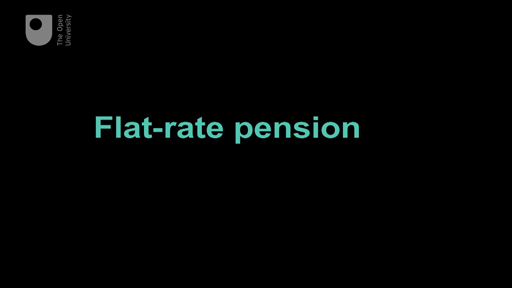7.1.3 Understanding the new flat-rate pension
From April 2016 there’ll be a single flat-rate state pension.
How much is this worth? How many years of National Insurance contributions do you need to receive it? What happens if you haven’t paid enough in contributions?
Work through the sums in this video and see what’s likely to be the overall effect on people’s saving habits.
Download this video clip.Video player: ou_futurelearn_money_vid_1059.mp4


Transcript
Martin Upton
From April 2016, the current state pension system will be replaced with a new single flat-rate pension. At 2014-15 rates, this is worth 151.57 pounds a week. To get the full amount, a person needs 35 years of National Insurance contributions or credits.
If they have less than 35 years, they get 1/35th of the pension for each year, except that they must have a minimum number of years of contributions, which is expected to be 10, to get any state pension at all. So, work out how much pension someone would get with 33 years of National Insurance contributions. Well, someone with 33 years of National insurance contributions and credits would get 33/35 x 151.57 pounds = 142.91 pounds a week of state pension.
The government reckons a single person needs a minimum of 148.35 pounds a week to live on and will therefore provide means-tested benefits if actual income is less than this. Since the new flatrate is more than this minimum, someone qualifying for the full state pension should not need to claim means-tested benefits. Therefore any extra saving they make for retirement feeds straight through to a higher retirement income with no benefits to be lost through a means test. But bear in mind that only 35 years are required for the full pension. So someone with a working life of say 52 years could have 17 years' worth of gaps in their record before their state pension is reduced.
Interactive feature not available in single page view (see it in standard view).
